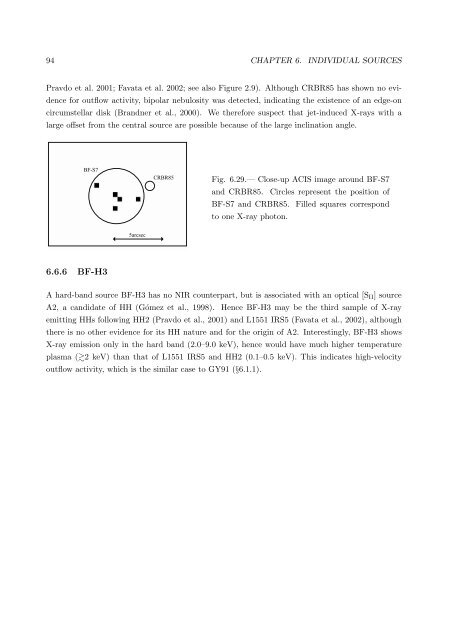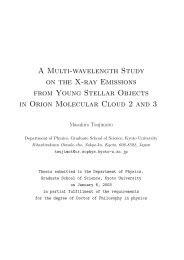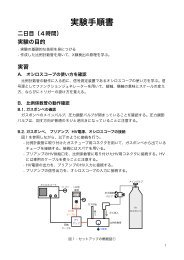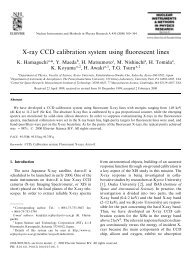X-ray Study of Low-mass Young Stellar Objects in the ρ Ophiuchi ...
X-ray Study of Low-mass Young Stellar Objects in the ρ Ophiuchi ...
X-ray Study of Low-mass Young Stellar Objects in the ρ Ophiuchi ...
You also want an ePaper? Increase the reach of your titles
YUMPU automatically turns print PDFs into web optimized ePapers that Google loves.
94 CHAPTER 6. INDIVIDUAL SOURCESPravdo et al. 2001; Favata et al. 2002; see also Figure 2.9). Although CRBR85 has shown no evidencefor outflow activity, bipolar nebulosity was detected, <strong>in</strong>dicat<strong>in</strong>g <strong>the</strong> existence <strong>of</strong> an edge-oncircumstellar disk (Brandner et al., 2000). We <strong>the</strong>refore suspect that jet-<strong>in</strong>duced X-<strong>ray</strong>s with alarge <strong>of</strong>fset from <strong>the</strong> central source are possible because <strong>of</strong> <strong>the</strong> large <strong>in</strong>cl<strong>in</strong>ation angle.BF-S7CRBR85Fig. 6.29.— Close-up ACIS image around BF-S7and CRBR85. Circles represent <strong>the</strong> position <strong>of</strong>BF-S7 and CRBR85. Filled squares correspondto one X-<strong>ray</strong> photon.5arcsec6.6.6 BF-H3A hard-band source BF-H3 has no NIR counterpart, but is associated with an optical [S II ] sourceA2, a candidate <strong>of</strong> HH (Gómez et al., 1998). Hence BF-H3 may be <strong>the</strong> third sample <strong>of</strong> X-<strong>ray</strong>emitt<strong>in</strong>g HHs follow<strong>in</strong>g HH2 (Pravdo et al., 2001) and L1551 IRS5 (Favata et al., 2002), although<strong>the</strong>re is no o<strong>the</strong>r evidence for its HH nature and for <strong>the</strong> orig<strong>in</strong> <strong>of</strong> A2. Interest<strong>in</strong>gly, BF-H3 showsX-<strong>ray</strong> emission only <strong>in</strong> <strong>the</strong> hard band (2.0–9.0 keV), hence would have much higher temperatureplasma (2 keV) than that <strong>of</strong> L1551 IRS5 and HH2 (0.1–0.5 keV). This <strong>in</strong>dicates high-velocityoutflow activity, which is <strong>the</strong> similar case to GY91 (§6.1.1).

















